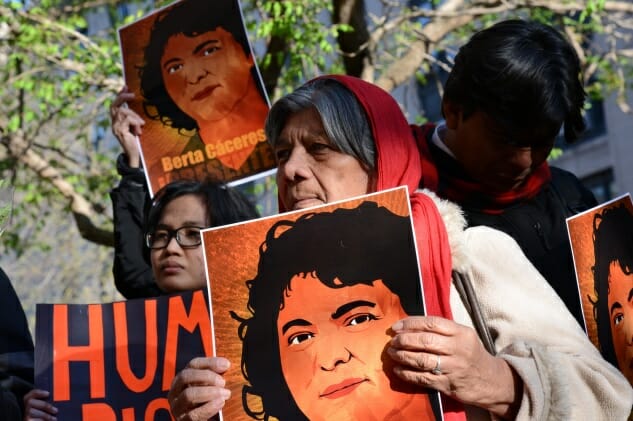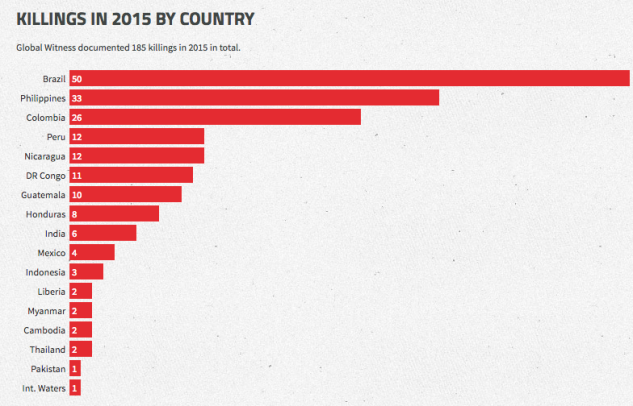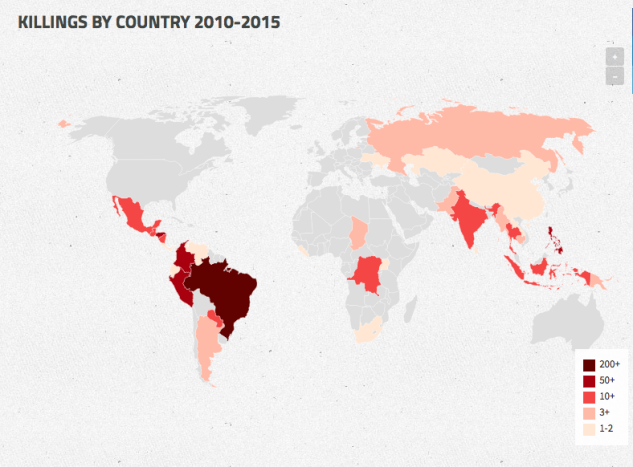Warming Signs: Why Are Governments Killing Environmentalists?

Often, when we talk about climate change, it seems like a far-off scenario. We talk in terms of saving the planet for future generations and predict disruptive sea level rise within the century. But the effects of climate change are already felt around the world; future changes will only intensify them.
![]()
Berta Cáceres was at home on March 3, 2016, when the gunmen stormed her house in Honduras and killed her. The attack likely didn’t come as a surprise for the environmental defender; before her death, she warned of 33 death threats and a hit list with her name on it. A 20-year-old first sergeant in the Honduran military later confirmed that her name had appeared on a hit list distributed among special forces units (military units that were trained, as it happens, by the United States).
The murder made headlines around the world. Cáceres was the recipient of the prestigious Goldman Environmental Prize, and her work as an environmental activist reached global audiences.
Isidro Baldenegro López, a smallholder farmer and another recipient of the Goldman Prize, was killed last month in Mexico. The high-profile work of activists like Cáceres and Baldenegro has often been successful in halting or delaying destructive activities, and their leadership inspired other environmental defenders to follow suit. But this work has never been more dangerous.
Murders of environmental activists reached an all-time high in 2015, the last year for which there are analyses. Most of these deaths don’t make the headlines, and others are likely never reported at all.
![]()
Rising Numbers
In 2015, more than three environmental defenders were killed every week, Global Witness reported murders in all, constituting a rise of nearly 60 percent from the previous year.
 Graphic courtesy of Global Witness
Graphic courtesy of Global Witness
“I am extremely appalled by the number of killings and attacks and the lack of response from states,” Michel Forst, the United Nations special rapporteur on human rights defenders, wrote in a recent report.
-

-

-

-

-

-

-

-

-

-

-

-

-

-

-

-

-

-

-

-

-

-

-

-

-

-

-

-

-

-

-

-

-

-

-

-

-

-

-

-

 Graphic courtesy of
Graphic courtesy of 






































